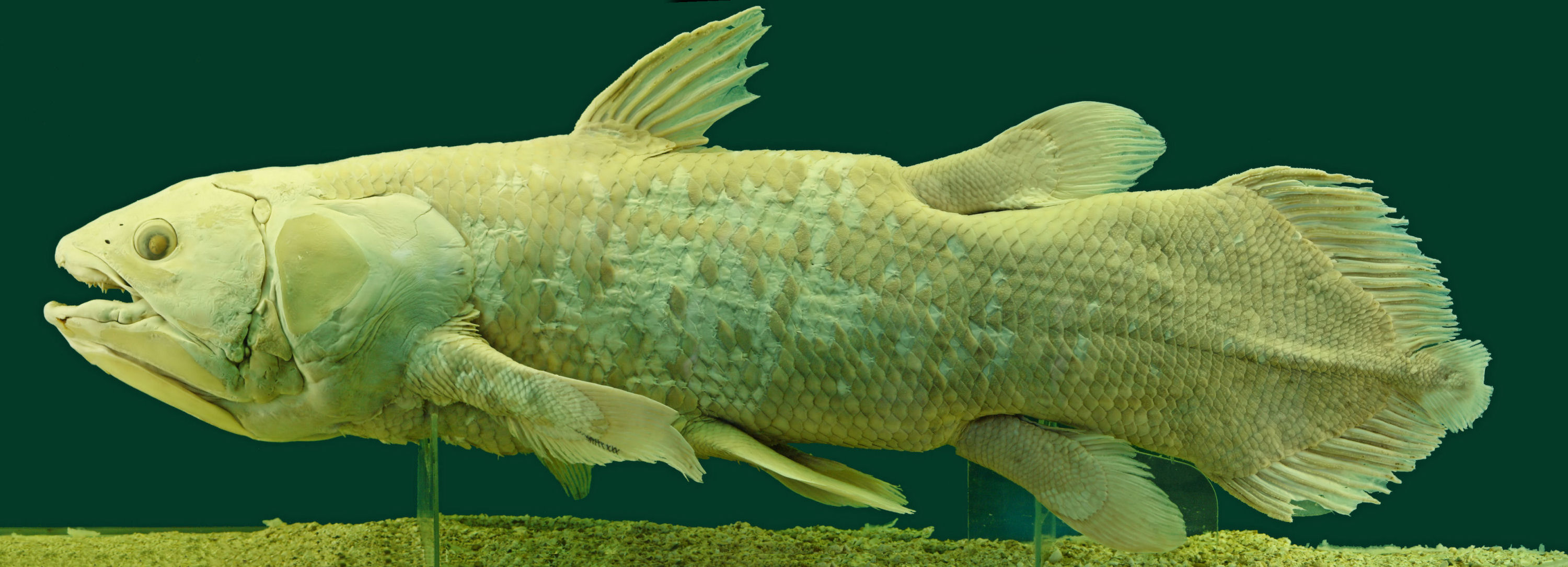This Day in History: December 21, 1938
Additional Date: December 21, 1938
In 1938, thirty two-year-old Marjorie Courtenay-Latimer was the curator of a small museum in the port town of East London, northeast of Cape Town, South Africa. She had an understanding with Captain Hendrick Goosen, of the trawler Nerine, which fished the nearby coastal waters of the Indian Ocean. When he would return from a fishing trip, Miss Latimer was welcome to examine the Nerine's catch, taking any unusual specimens for the museum.
On December 23rd, 1938, the Nerine entered port after a stint trawling off the mouth of the nearby Chalumna River. As per their usual arrangement, Courtenay-Latimer came by the docks that day to examine the contents catch. When she first saw the coelacanth protruding through the slimy pile she had no idea what it was, but knew it was important and needed to be identified.
Raking through her small collection of reference books back at the museum, she noted the similarities between her specimen and pictures of prehistoric fish. She then made a crude sketch of her creature, which she mailed to a professor at Rhodes University in nearby Grahamstown.
Being so close to the holidays, Courtenay-Latimer would not hear back from Rhodes University for some time after the New Year. Meanwhile, in an attempt to preserve the fish she had it mounted. Then, on January 3rd Courtenay-Latimer received a urgent telegram from Rhodes: "MOST IMPORTANT PRESERVE SKELETON AND GILLS = FISH DESCRIBED." Unfortunately, the internal organs had already been tossed away after the mounting process. Even photographs taken of the specimen's preparation had somehow been spoiled. Just when it seemed that nothing else could go wrong, the museum director in East London dismissed her find as a nothing more than a type of rock cod - a spices of grouper.
Finally, on February 16th, Professor J.L.B. Smith from Rhodes University arrived at the East London museum. He identified the fish immediately as a coelacanth, a fish that had been swimming in the seas 400 million years ago, and believed to have been extinct for some 70 million years.
The reaction was immediate and sensational. Newspapers from all over the world hailed the discovery as most important zoological find of the century, often comparing it to catching a living dinosaur.
Over the years a number of other specimens have turned up in the Southern oceans. In 1952, a population was found near the Comoro Islands northwest of Madagascar, and specimens were subsequently caught off Mozambique, Madagascar, and, in 1997, off Sulawesi, Indonesia. Recently a population was discovered in shallow, South African waters, suggesting suggest that these ancient fishes may be more widespread than previously thought. Most experts believe that the fish lives at a depth of 100 to 220 meters.
